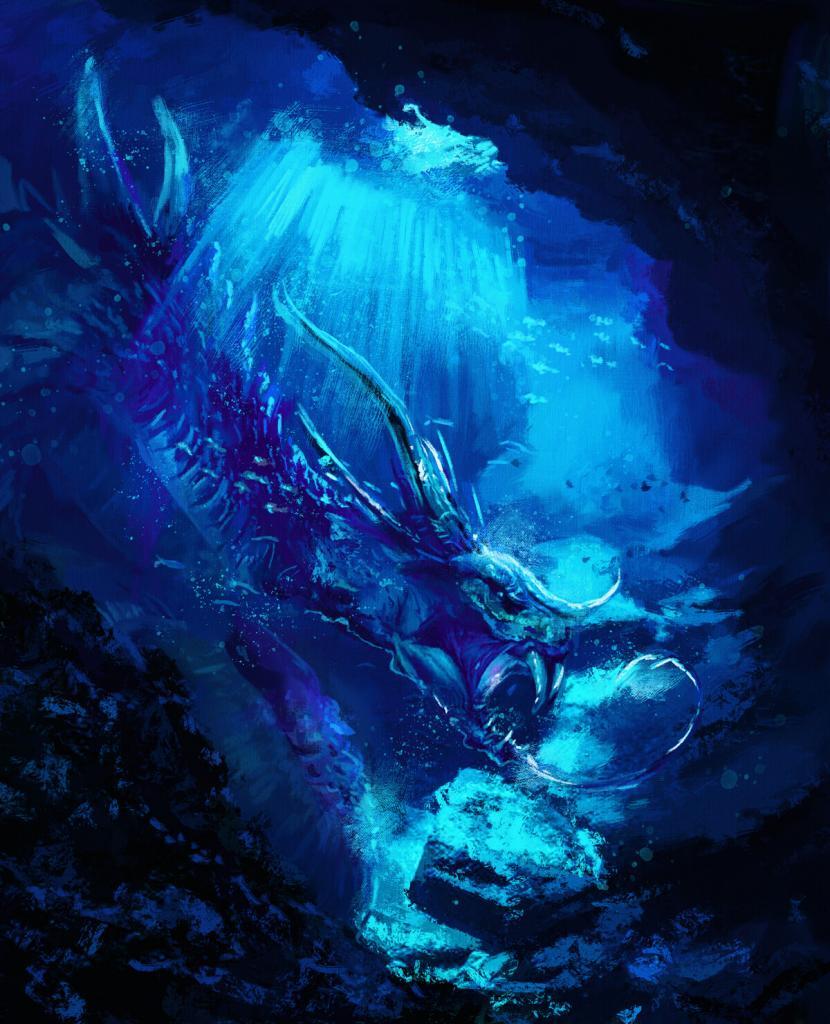Folklore on the Tizheruk

There are so many cultures that have tales of Sea-Monsters, particularly of the serpent variety, that it would almost be a shock to learn that the Inuit culture didn’t possess one. It is only natural to fear what we do not know, and the list of phobias that have spawned from “not knowing” is fairly long. Fear of the dark is a prevalent phobia for many people, which is why it’s such a commonplace tool for creators of horror movies and scary stories. Another common phobia is fear of the unknown in the depths of the sea. The common theme here is that many fear not only what they do not know but also what they cannot see, dual traits that make the habitat of the Tizheruk (tiz-zer-ook), also known as the Pal-Rai-Yûk (pall-rye-yook), that much more frightening.
Not unlike the Loch Ness Monster, the Tizheruk is described as being a sea-serpent. Its visage is quite interesting; with a head that is purportedly seven feet long, it is said to be estimated at only fifteen feet in total length. In some cases, the Tizheruk is said to have a fishtail, while still in others it is said to be more of a flipper, but those aren’t the only inconsistencies that make up the lore of the Tizheruk. As can be observed in the pictures that accompany this article, there are a wide variety of different accounts of what the Tizheruk actually looks like.

According to Mysterious Creatures: A Guide to Cryptozoology by George M. Eberhart the Tizheruk has thick fur, a snake or crocodile-like head, short horns, and a long tongue. Eberhart’s version of the Tizheruk has three pairs of legs and three dorsal fins, and his version also has the description of a flipper for a tail. He references that the Tizheruk could be an evolutionary off-shoot of a long-necked seal that ventured from the shores of the arctic ocean to the fresh-water rivers that fork inland from Key Island in Alaska.
Without a doubt, the most terrifying form that the Tizheruk is said to have is that of a giant eel-like creature with transparent skin and flesh, which not only allows the observer to see still-digesting victims but also allows the creature to be less visible when stalking its prey. This version of the Tizheruk can also venture into water as shallow as one foot deep, meaning it can compress its body small enough to fit in such a space. This makes it easier for it to ambush predators and snatch prey. It also results in any still-living victims in its belly being brutally crushed.

There is surprisingly not a great deal of lore about the Tizheruk available to give the full extent of this creature’s history, but there have been quite a few sightings, including the possibility of it being caught on camera. NBC News even did an article about Alaska’s Loch Ness Monster being captured on tape. While I couldn’t locate the footage that supposedly resurfaced in 2009, I did find a more recent clip from when I first arrived in Alaska in 2016 filmed by the Alaskan Bureau of Land Management.
Having watched the clip, it’s unclear what it really is, but as the video shows the Department of Fish and Game did their best to debunk this sighting. What are your thoughts on this water-bound cryptid?
Interested in other Alaskan cryptids? Take a look at these fascinating creatures of the arctic!

Georgia-based author and artist, Mary has been a horror aficionado since the mid-2000s. Originally a hobby artist and writer, she found her niche in the horror industry in late 2019 and hasn’t looked back since. Mary’s evolution into a horror expert allowed her to express herself truly for the first time in her life. Now, she prides herself on indulging in the stuff of nightmares.
Mary also moonlights as a content creator across multiple social media platforms—breaking down horror tropes on YouTube, as well as playing horror games and broadcasting live digital art sessions on Twitch.


